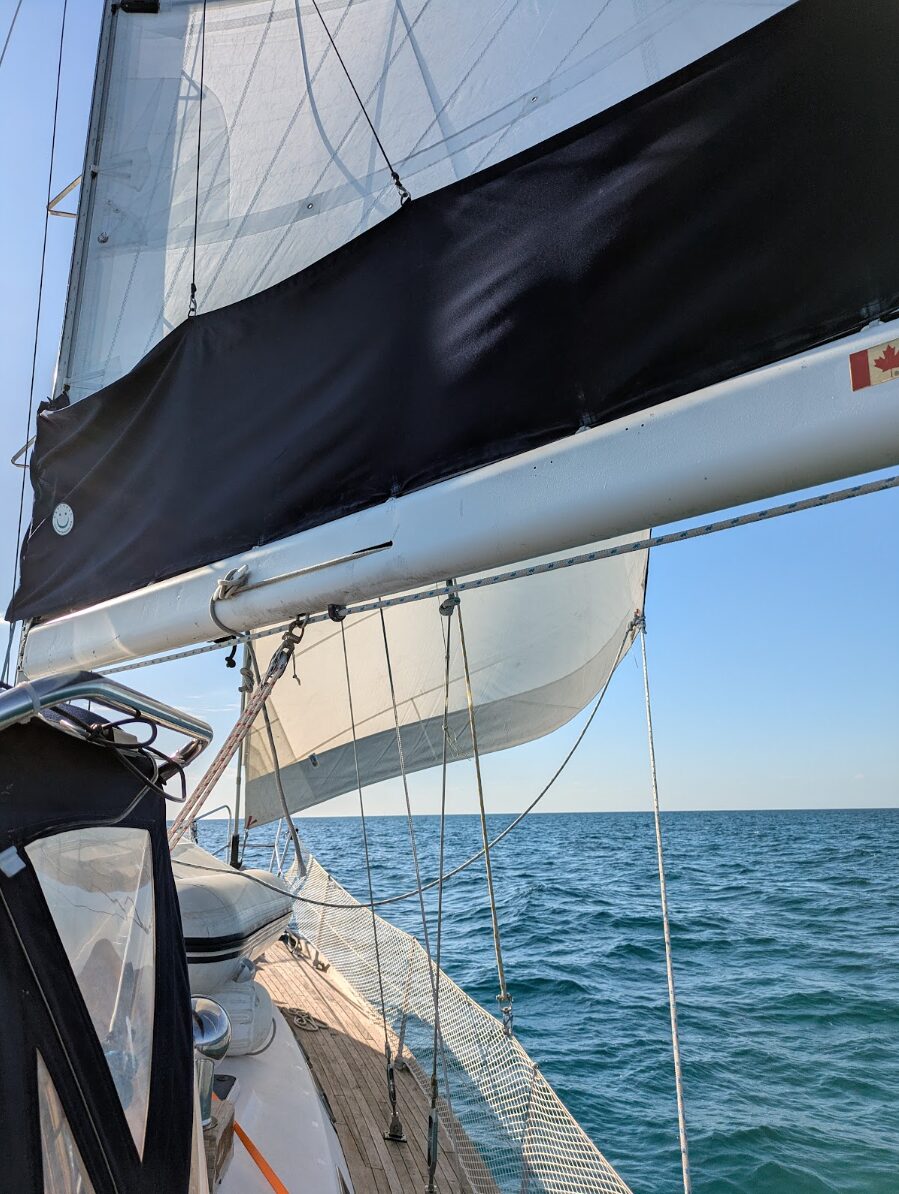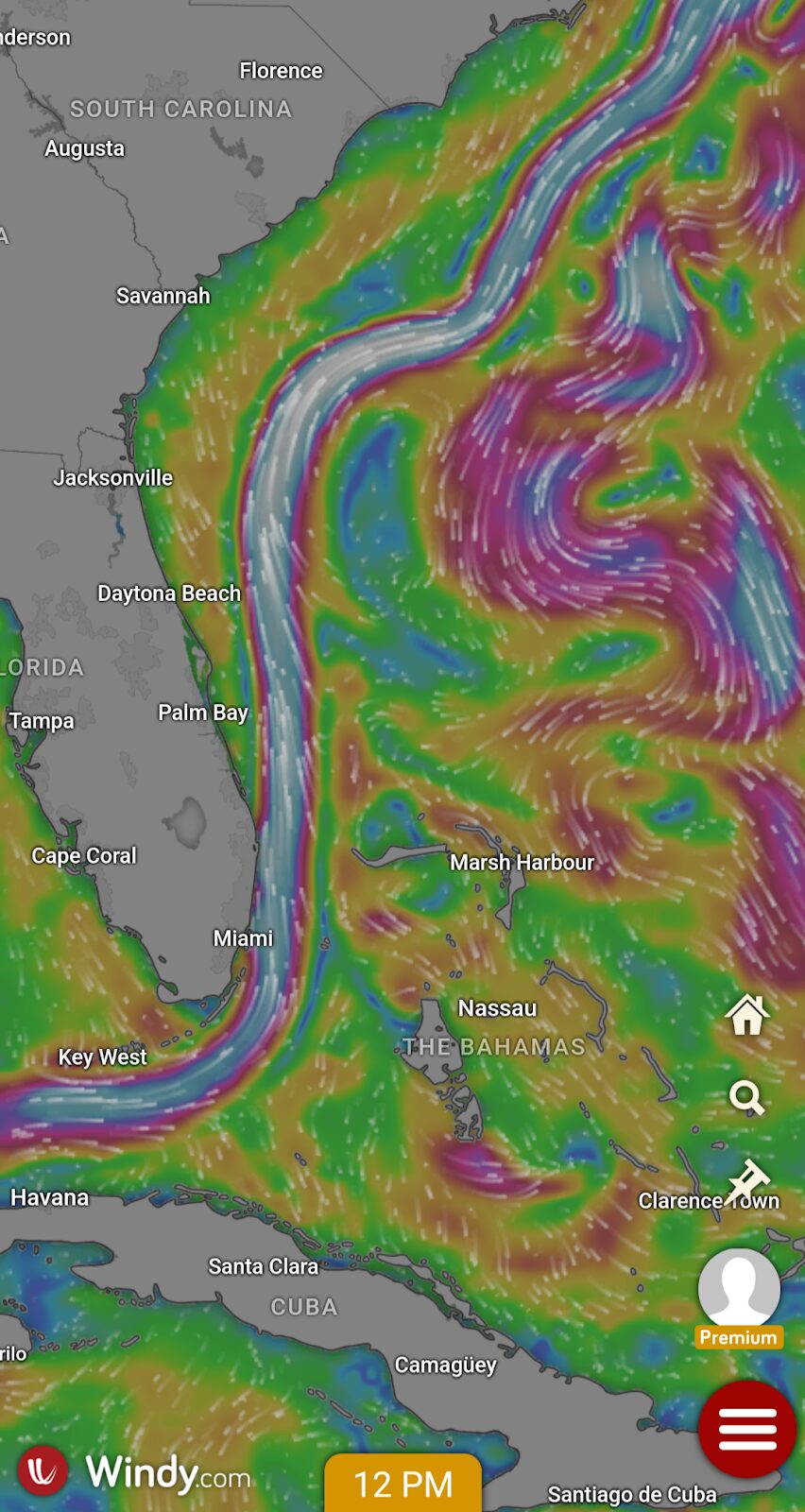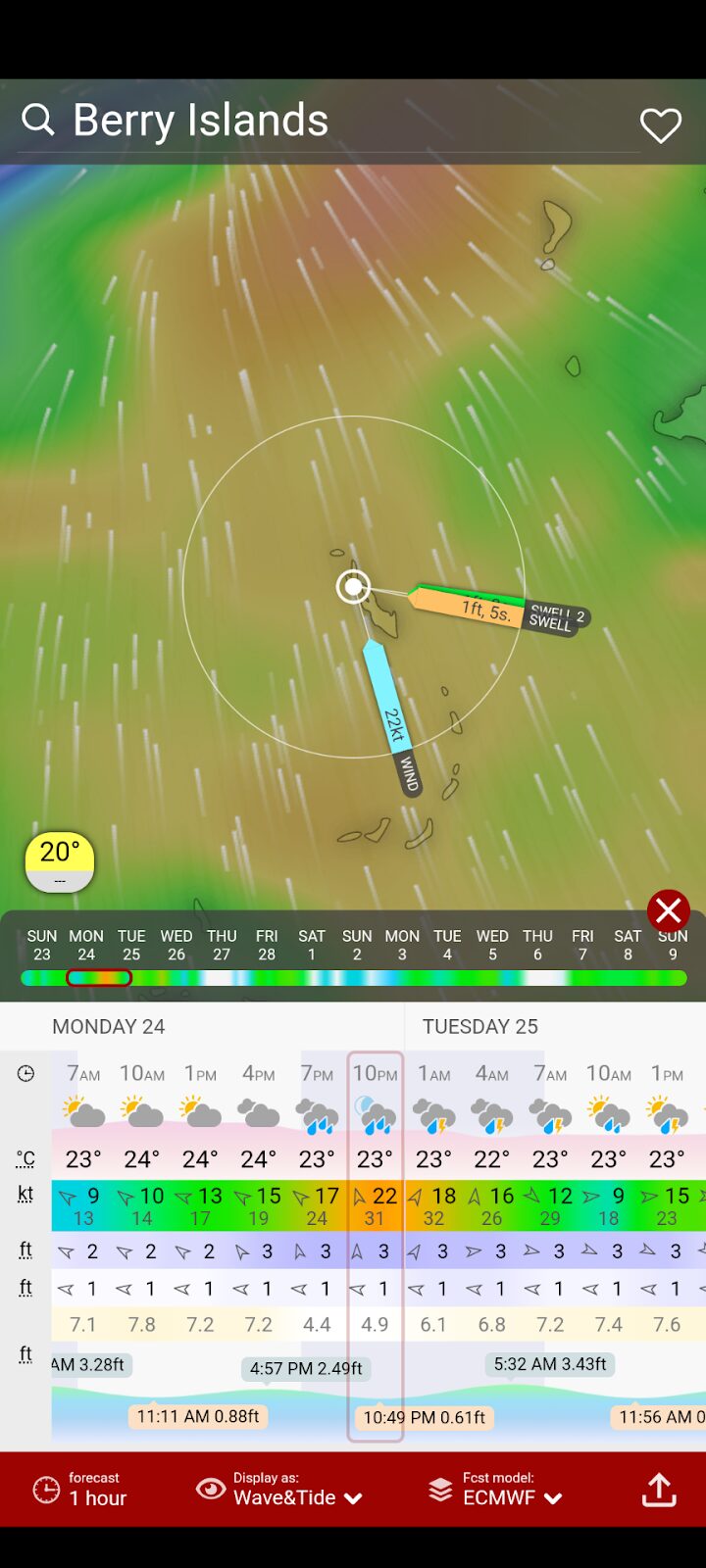
When we first sailed to the Bahamas we weren’t familiar with its wind and current patterns and we learnt by trial and error. Now sailing around the idyllic islands of the Bahamas for our fifth season we have learnt a few tricks. Being familiar with an area makes sailing so much more enjoyable and comfortable, especially when you have a baby and toddler on board.
Gulfstream

In order to reach the Bahamas you first have to get across the Gulfstream, a very strong current which flows North between Florida and the Bahamas (flowing from the Gulf of Mexico up the coast all the way to the Chesapeake beforing flowing out to the open ocean). Our first time getting across it we wanted the perfect conditions to sail, without motoring and having small swells. We ended up waiting three weeks to then jump on a subpar weather window. Now we know better, avoid the North wind which will create treacherous steep waves. Give 24 hours after any strong winds for the seas to calm a little. If going into an East headwind don’t cross with over 10 to 15 knots at most otherwise it’ll be a beating and not enjoyable crossing. If you have a calm sea state just go for it even though it might mean motoring.
Clocking winds

We have noticed that the wind in the Bahamas generally will be Easterly, the Southerly, followed by Westerly and ultimately Northerly. Sometimes this whole clocking pattern can take weeks to happen meanwhile we have also seen it unfold in a matter of a day or two. This helps plan your itinerary while island hopping.
Trade winds
These are the predominant winds and happen most often. In general the winds are Easterly or Southeasterly. Meaning that you will have to plan your travel accordingly. Try to cover as much East or South ground as possible whenever you have the opportunity. We have found it much harder to sail further South in the Bahamas while returning to the United States is much easier. It always seems like you are beating upwind so make sure to use the Westerly and Northerly winds to head South.
Northerlies
During the winter months (December through March) there are a lot of strong storms “Northerlies”. These strong winds come from the North and force you into hiding in safe harbours or finding the right island with good protection. Familiarise yourself with the various anchorages offering good protection near where you are sailing. (This means get on the backside or leeward side of a landmass big enough to stop any waves that might wrap around causing surge) In March there starts to be less of these storms. There are only a few anchorages around the Bahamas which offer all around protection.
Rages
While traveling through the Bahamas you will most likely have to cross from one side of a chain of islands to another through a cut. Each cut has their particularity and seeking local knowledge or reading about them in guides like waterway or active captainis always a good idea. The current can flow extremely fast and if going out at the wrong time can become dangerous. Some like Current cut in Eleuthera can flow as fast as 10 knots which most sailboats cannot fight. Plus if you have opposing current to big waves and strong winds it can create extremely steep waves. This is called a rage. We have been caught in one while our baby was getting airborne in bed and it was terrifying. Time your crossing with slack if possible or at least calm conditions. Sometimes timing can be very hard if running from weather and trying to find a safe harbour. Certain cuts like Whale cut in the Abacos are affected by swell coming from way across the Atlantic Ocean and you can find daily information about it on the VHF.
Squalls, Tropical Storms and Hurricanes
Hurricane season begins in May and runs through November but storms don’t really have a calendar and we have to always be cautious. When living on a sailboat we are at the mercy of mother nature and need to plan accordingly. We have noticed that in April the winds lighten up but then thunderstorms begin. Squalls can be scary and dangerous. We have been caught in some at anchor and while sailing. On a beautiful beam sail protected by the Exumas we got caught in a scary squall. From sunshine and 20 knots wind to pouring rain and 60 knots wind in a few minutes. Keep an eye on the weather radar as you can often see a line heading towards you. Tropical storms and hurricanes are predicted with NOAA and this is a great platform for keeping track of them and seeing their predicted trajectory and speed of travel and strength.
Over the few seasons cruising the Bahamas we have found it very important to carefully plan our travel. Seeking out information about the different areas we sail in is very important. Even consulting other sailors regarding weather predictions and what they have experienced is extremely valuable. We have had our fair share of adverse conditions and luckily none of them scared us away from sailing. We have been caught in a 60 knot squall whilst anchored with a dead engine, experienced a rage in Cave Cut, dragged anchor during a tornado and watched approaching lightning storms strike all around us, before even getting struck once. The way you communicate with your partner and how you handle stressful situations will make them less terrifying and they will become a good campfire story instead. When prepared for something it makes it less scary.
Anne Alexandra Fortin
Cory and Alex share their adventure with weekly videos on their YouTube channel “Wildly Intrepid Sailing”. Their dream is to travel the world and to live without any regrets.
